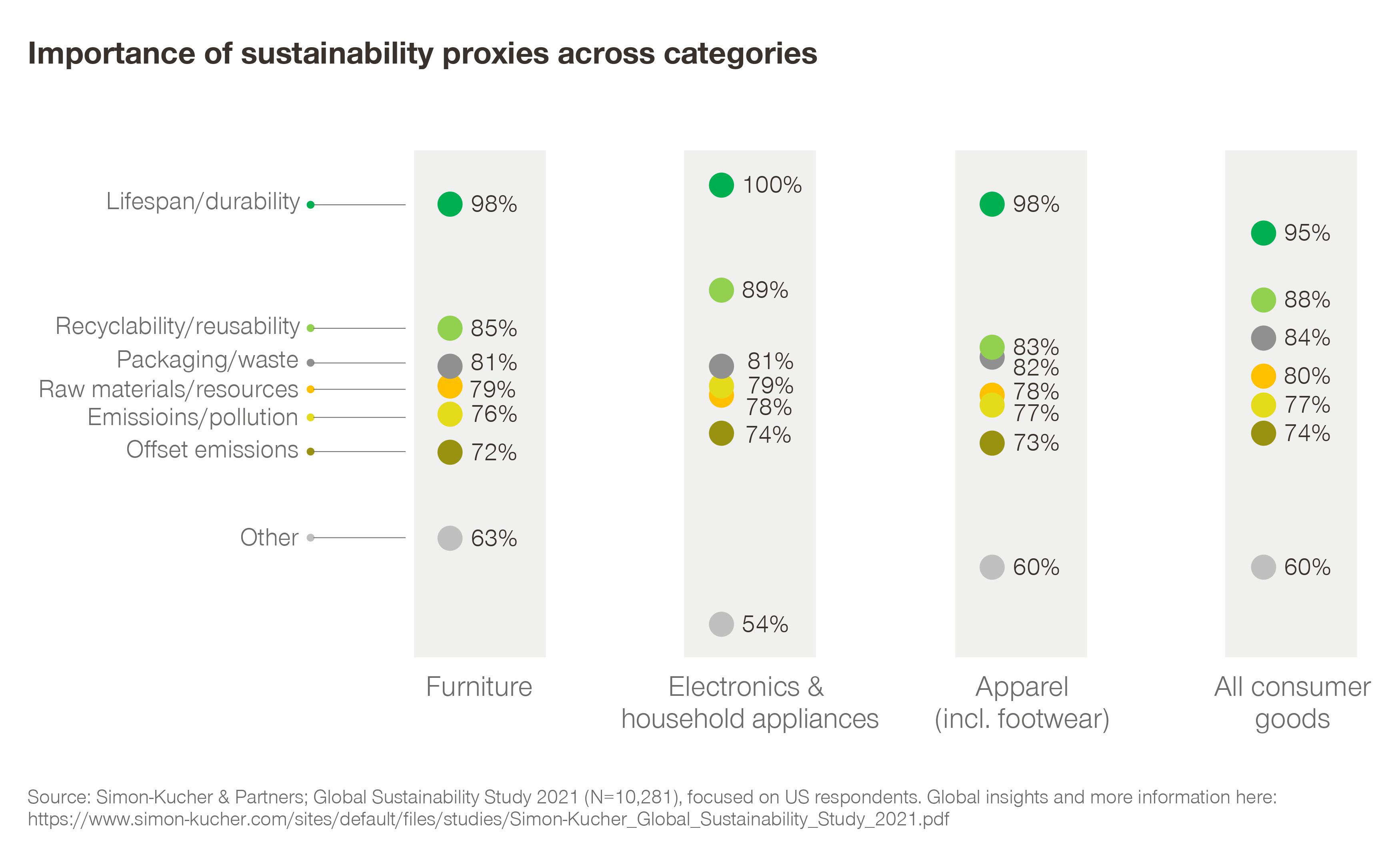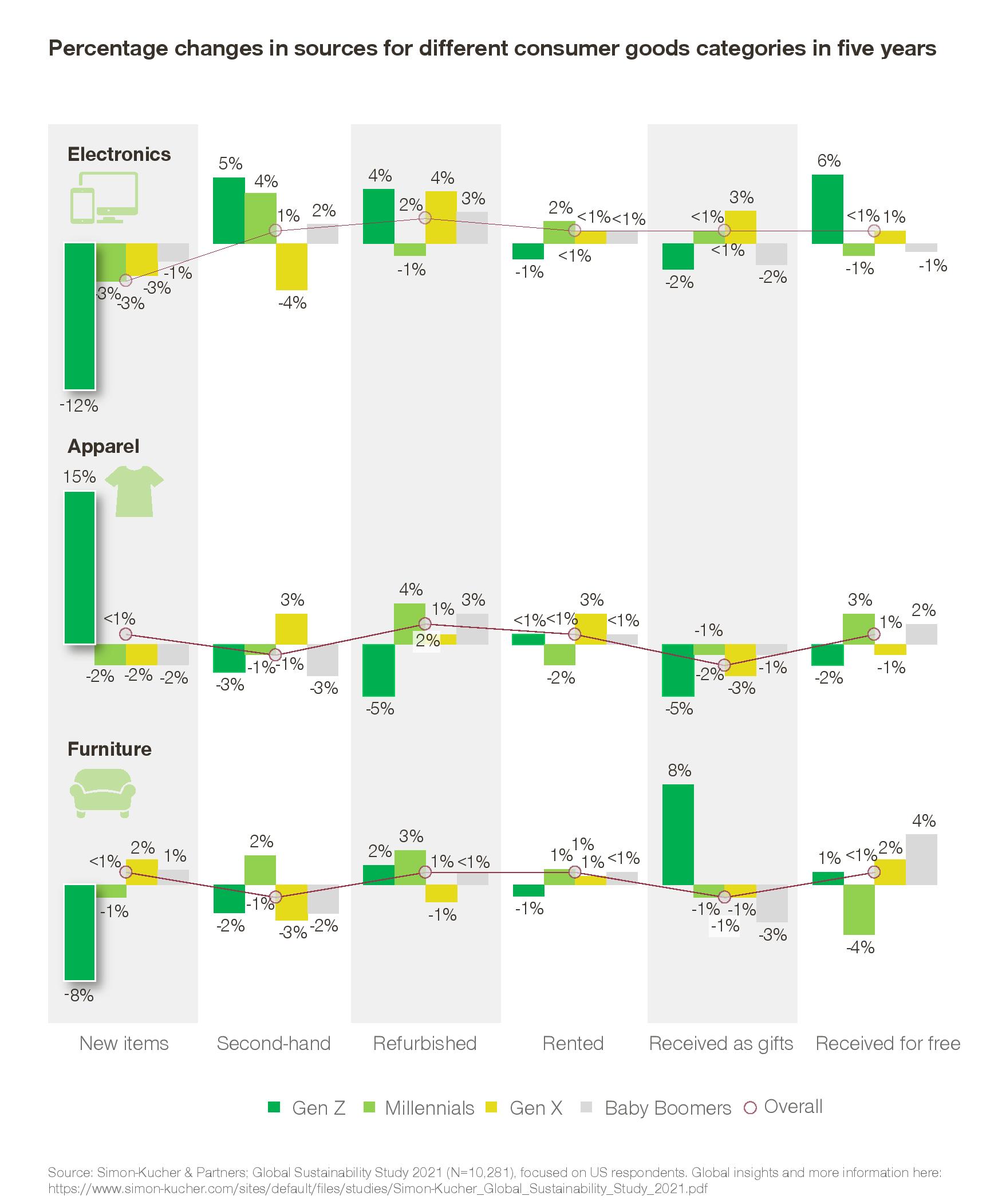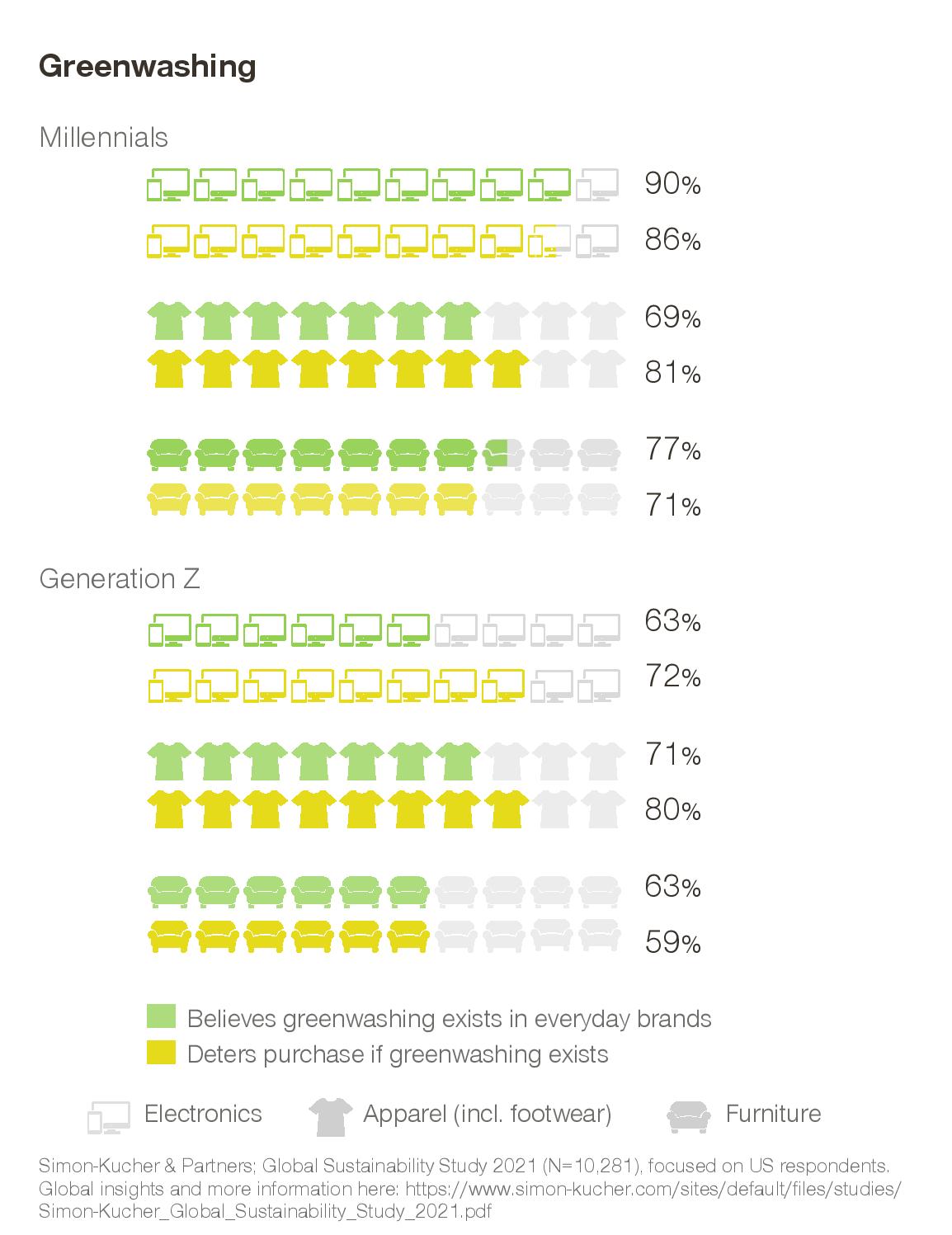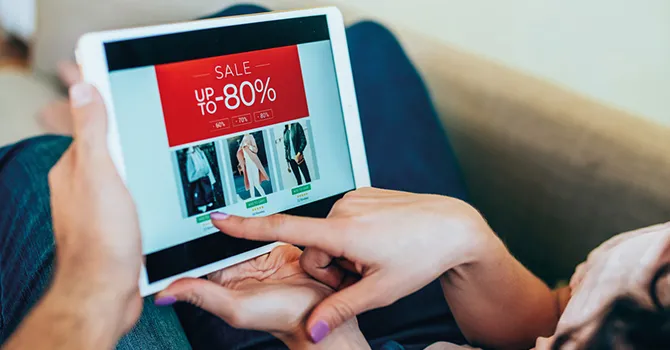Every year, the consumer market is flooded with new eco-conscious customers as younger generations enter the workforce. Case in point: Our 2021 Global Sustainability Study found that sustainability has already become a key decision driver for consumers when shopping for apparel, electronics, or furniture. Our experts outline what strategies companies must adopt to maintain growth.
Our 2021 Global Sustainability Study determined that environmental sustainability is becoming a more important driver of consumer decision-making: More than half of consumers now rank sustainability as a top-5 purchase decision driver for a wide range of products, from groceries to cars.
To capitalize on this shift in consumer expectations, companies should consider adopting business models that align with this change in behavior. If not, they run the risk of becoming associated with negative business practices and falling behind companies that are willing to innovate and pivot to consumer preferences.
Proxies for sustainability
Sustainably minded manufacturing companies are investing in strategies to reduce/offset emissions across their supply chain, production, operations, logistics, and business processes.
Consumers need ways to easily understand the sustainability of a product, especially with discretionary, non-essential goods such as electronics, apparel, and furniture. Currently, they use proxies such as lifespan and durability to evaluate these products, with recyclability and reusability as close seconds.
The damage that fast fashion, cheap furniture, and electronic waste has on the environment has been well-documented in the news and media over the past 10 years. In fact, Millennials have grown up valuing goods that they know will last beyond their own usage. An increasing interest in the overall lifespan of durable goods is a decisive step fueling the circular economy, a concept that seeks to uncouple economic growth from the consumption of finite resources.

Second-hand goods
According to our study, this preference for increasing a product’s lifespan has led consumers to focus more on purchasing second-hand or refurbished items over new products.
This is especially true of Millennials, who are in the midst of purchasing and furnishing homes and are increasingly turning to the circular economy for solutions. When asked how they plan to shift their current purchasing behavior for discretionary goods five years from now, Millennials indicated a significant shift away from purchasing new items and toward buying refurbished or second-hand items.

As younger, eco-conscious customers continue to grow in the market, companies need to develop circular business practices to meet their needs. Some leading companies in the electronics, apparel, and furniture space are already recognizing the importance of these value drivers for younger consumers.
The diversity of options that the circular economy provides – including renting, recycling, upcycling, and trade-in programs – are all opportunities to drive additional revenue streams while increasing the sustainable value proposition for eco-conscious consumers.
![]()
Examples of corporate eco-conscious efforts
Lululemon
- A leading apparel brand
- Recently introduced a trade-in and resale program nationwide
Floyd Furniture
- A D2C furniture retailer
- Launched a “Full Cycle” initiative that allows customers to buy returned, used, or imperfect products at a discount
Apple
- The tech giant has been using its trade-in program for more than 10 years
- The program attracts consumers who would otherwise purchase cheaper alternatives, while reducing negative environmental impact
In all these examples what is good for the environment is good for business:
- Extends the life of the product
- Creates a circular economy
- Attracts sustainably minded consumers
- Keeps consumers in the brand/platform ecosystem
- Generates a secondary revenue stream from resale
- Sells products at lower price points for price-conscious consumers
![]()
Greenwashing
Greenwashing is a phenomenon where brands use messaging to portray goods and services as being more environmentally sustainable than they really are. Our study revealed quite a substantial generational gap in consumer perception.
Roughly 70 percent of Millennials and Gen Z consumers believe that greenwashing exists, compared to less than 50 percent of Gen X and Baby Boomers. This is likely due to increased interest in company values and awareness of the practice. Millennials, for example, tend to research brands to check if there’s a mutual fit with values and are put off by vague language and buzzwords when it comes to sustainability messaging.
The preference for increasing product lifespan may come from this hesitation to believe companies’ sustainability promises. Purchasing reused goods that last a long time ensures that the emissions from the product production won’t need to be repeated, regardless of what the companies claim.

Key Takeaways
Companies will need to leverage these insights to transform their businesses and expand their circular business practices. The additional revenue streams that this process develops will also create new opportunities to increase sustainability efforts and deepen engagement with both current and prospective customers.
Companies who are able to adjust to current trends will be able to profit in the medium- and long-term. Sustainability minded business practices will become especially important as younger, more eco-conscious generations continue maturing into the primary consumer group.
Keep an eye out for our 2022 Global Sustainability Study which will be released this fall!








